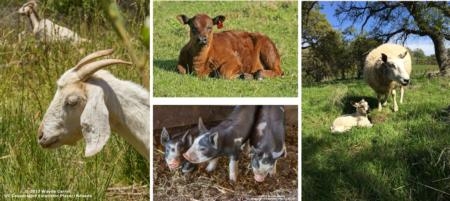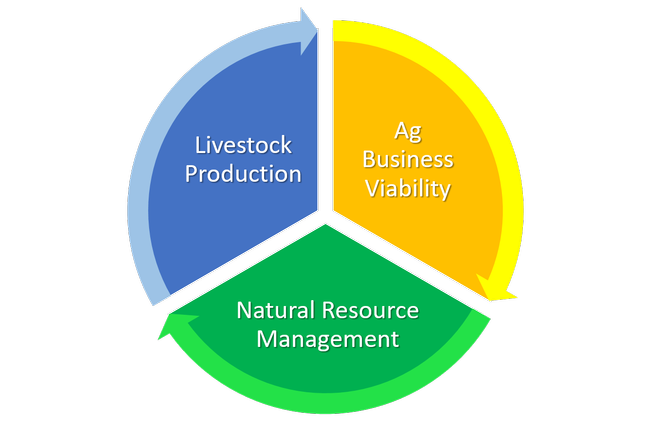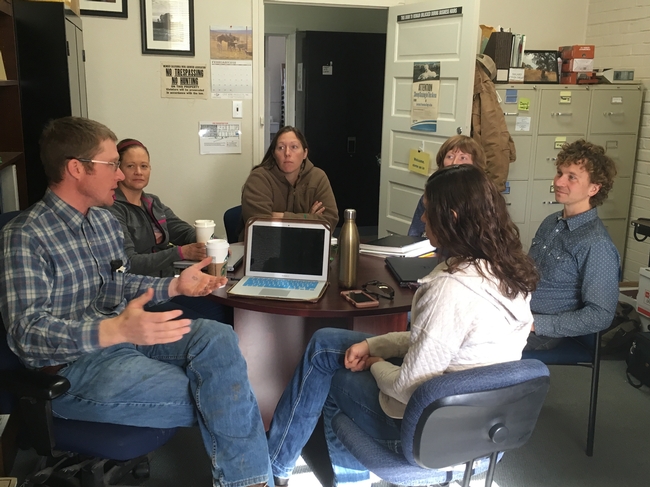As a (relatively) new livestock and natural resources farm advisor, I'm fortunate to have known and worked with my predecessors (Roger Ingram in Placer-Nevada and Glenn Nader in Sutter-Yuba). I'm also fortunate to be working in a region where I've lived for most of my life. Even so, during my first year on the job, I've been conducting an informal needs assessment to determine the direction and focus of my research and extension program. And I've been learning a great deal!
One of the first things I realized in this process is that the breadth of geography, terrain and ecosystems in my four-county region is remarkable. The lowest point in Placer, Nevada, Sutter and Yuba Counties is 23 feet above sea level at Joes Landing on the Sacramento River (Sutter County). The highest point in my four counties is Mount Lola in Nevada County at 9,148 feet above sea level. Rangeland types extend from Sacramento valley grasslands and riparian habitats, through the vernal pools and blue oak woodlands of the foothills, through the mixed conifer belt and mountain meadows of the Sierra Nevada, and on to the eastside pine and sagebrush habitats east of the Sierra crest.
The livestock production systems in my four counties reflect this variation. The ranches in my region primarily produce beef cattle, sheep, goats, hogs and poultry. Operational size varies as well, from small-scale, part-time ranches to large-scale, extensive enterprises. Grazing resources range from annual grassland to irrigated pasture (valley, foothill and mountain) to mountain meadows to sagebrush steppe, as well as a significant amount of brush-land.
Ranch ownership tends to be somewhat less diverse (at least according to the 2012 Census of Agriculture). 86% of ranch owners identify as white, and 61% are male. My focus is on serving commercial livestock producers; targeted grazing contractors; land trusts and other nonprofits with an emphasis on rangelands; local, state and federal land and resource management agencies; and local community and consumer groups interested in local food systems and natural resource management.
As I said, my method for learning about the needs of the region was largely informal. Over the course of my first year, I met with a variety of ranchers, agency land managers, nonprofit organizations, and others. These conversations revealed three primary and interrelated areas of need for applied research and extension activities:
Based on these themes, I've initiated a number of research and educational activities, including:
- Research regarding specific rangeland drought management and response tools.
- Research and demonstration of tools for enhancing the productivity and sustainability of irrigated pasture.
- Research and demonstration of tools that help minimize livestock-wildlife conflicts.
- Development and facilitation of emergency planning and response tools (especially for wildfire) for commercial livestock producers.
- Development and demonstration of ranch business planning and economic analysis tools, including online tools.
- Continued development of hands-on livestock husbandry and grazing management educational programs.
- Research into and demonstration of grazing as a vegetation management and fuel load reduction tool.
I'm very fortunate to be working with extension colleagues within my region and throughout the state on many of these issues. One of the strengths of the cooperative extension system is this opportunity for collaboration and for tapping into cutting edge research led by our campus-based specialists. As I begin my second year as an advisor, I am working with colleagues on a variety of projects:
- We're starting a 3-year study into the economic and ecological consequences of weaning calves early as a drought response strategy. This research will be conducted at the Sierra Foothill Research and Extension Center.
- I'm leading an ongoing effort to better understand the direct and indirect impacts to ranching operations from a variety of predators, including gray wolves.
- We've developed research-based information regarding the effectiveness of a variety of livestock protection tools.
- We're continuing to offer a variety of farm and ranch business planning workshops and short courses designed to help beginning and established producers improve economic viability.
- We're conducting a cross-sectional survey of irrigated pasture management systems throughout northern California, including on five sites in Placer and Nevada Counties.
- I'm starting a research project evaluating livestock guardian dog behavior and wildlife interactions that may ultimately include ranch partners and researchers in other Western states.
Coming into this position from a production background, I've realized that there are more needs than any one person can possibly address. My needs assessment has helped me identify what I feel are the key priorities currently. Obviously, these needs will evolve as economic, environmental, and climatic conditions change. What an exciting prospect!
I'd still like to hear from and talk with more producers! Contact me at dmacon@ucanr.edu or (530) 889-7385 if you have questions, comments, or would like to schedule a ranch call!




